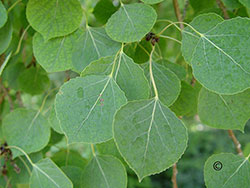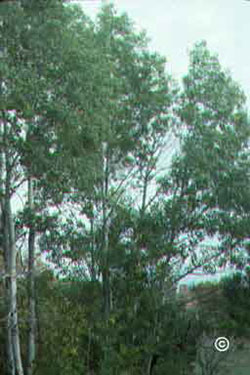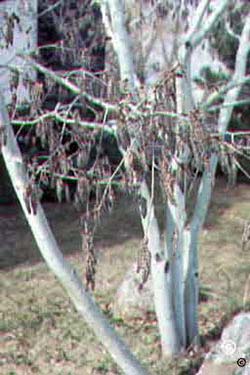Lots of preparation, patience and understanding are needed to grow aspen in the urban landscape. Aspen prefer light soils that are acidic and drain well, but these conditions are rarely found in urban areas. Aspen will do best on the north and east sides of buildings.
Do I need a berm around my aspen?
 If the soil where an aspen tree is to be planted has a high content of clay, build a berm of sandy loam 18 to 24 inches high. A berm is a mound or wall of earth. The berm should be mulched and several plants should be planted in the bed.
If the soil where an aspen tree is to be planted has a high content of clay, build a berm of sandy loam 18 to 24 inches high. A berm is a mound or wall of earth. The berm should be mulched and several plants should be planted in the bed.
Where are aspen’s collected?
Nearly all aspen available for sale are collected, meaning they were dug out of the wild with little of their root system. Even after careful preparation and care, aspen still only have a life expectancy of about 25 years in the home landscape.

Are aspens prone to diseases or insects?
Expect insects and diseases, some of which have no controls. Blackened leaves towards the late summer and fall are caused by aphid secretion or a leaf spot disease. The leaf spot disease is known as Marssonina leaf spot or aspen leaf spot. The best control is to pick up the leaves, which are the source of reinfection, in the fall and cut away trees and branches to increase air circulation and reduce humidity throughout the aspens.
Orange pimples on the bark indicate the presence of cytospora canker. Cankered branches usually occur on weakened trees and need to be removed.
Oystershell scale is an insect about 1/8” long, brown or gray in color and is in the shape of an oyster shell. The insect feeds on the trunk and branches of  the aspen, resulting in a weakened tree. The stage most familiar to the homeowner is the covering of the full-grown female. The covering remains attached to the tree for some time, often, with the overwintering eggs protected beneath the old scale. Overwintering scale can be gently scrubbed away with a plastic covered sponge. Oystershell scale can be difficult to control due to the waxy covering on the insect. Once an individual tree in an aspen grove starts developing deadwood and a thin crown, it should be removed to allow new shoots to develop.
the aspen, resulting in a weakened tree. The stage most familiar to the homeowner is the covering of the full-grown female. The covering remains attached to the tree for some time, often, with the overwintering eggs protected beneath the old scale. Overwintering scale can be gently scrubbed away with a plastic covered sponge. Oystershell scale can be difficult to control due to the waxy covering on the insect. Once an individual tree in an aspen grove starts developing deadwood and a thin crown, it should be removed to allow new shoots to develop.
For “Aspen Leaf Spot” refer to message number 1403.
For “Oystershell Scale” refer to message number 1414.
For more information, see the following Colorado State University Extension fact sheet(s).
- Bacterial Wetwood
- Aspen and Poplar Leaf Spots
- Cytospora Canker
- Aphids on Shade Trees and Ornamental
- Oystershell Scale
- Insect Control: Horticultural Oils
- Poplar Twiggall Fly
- Trees and Shrubs for Mountain Areas
- The Science of Planting Trees



